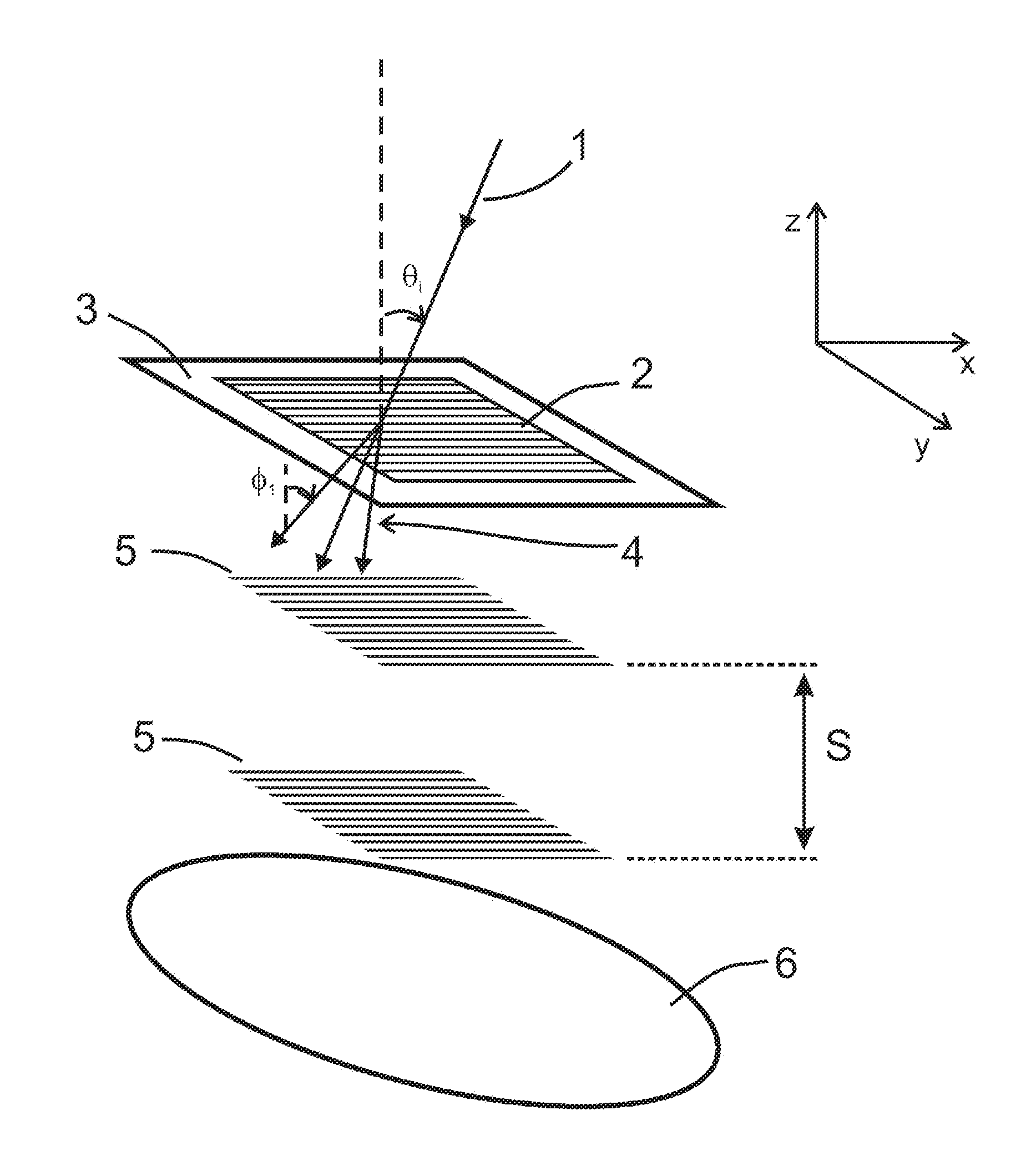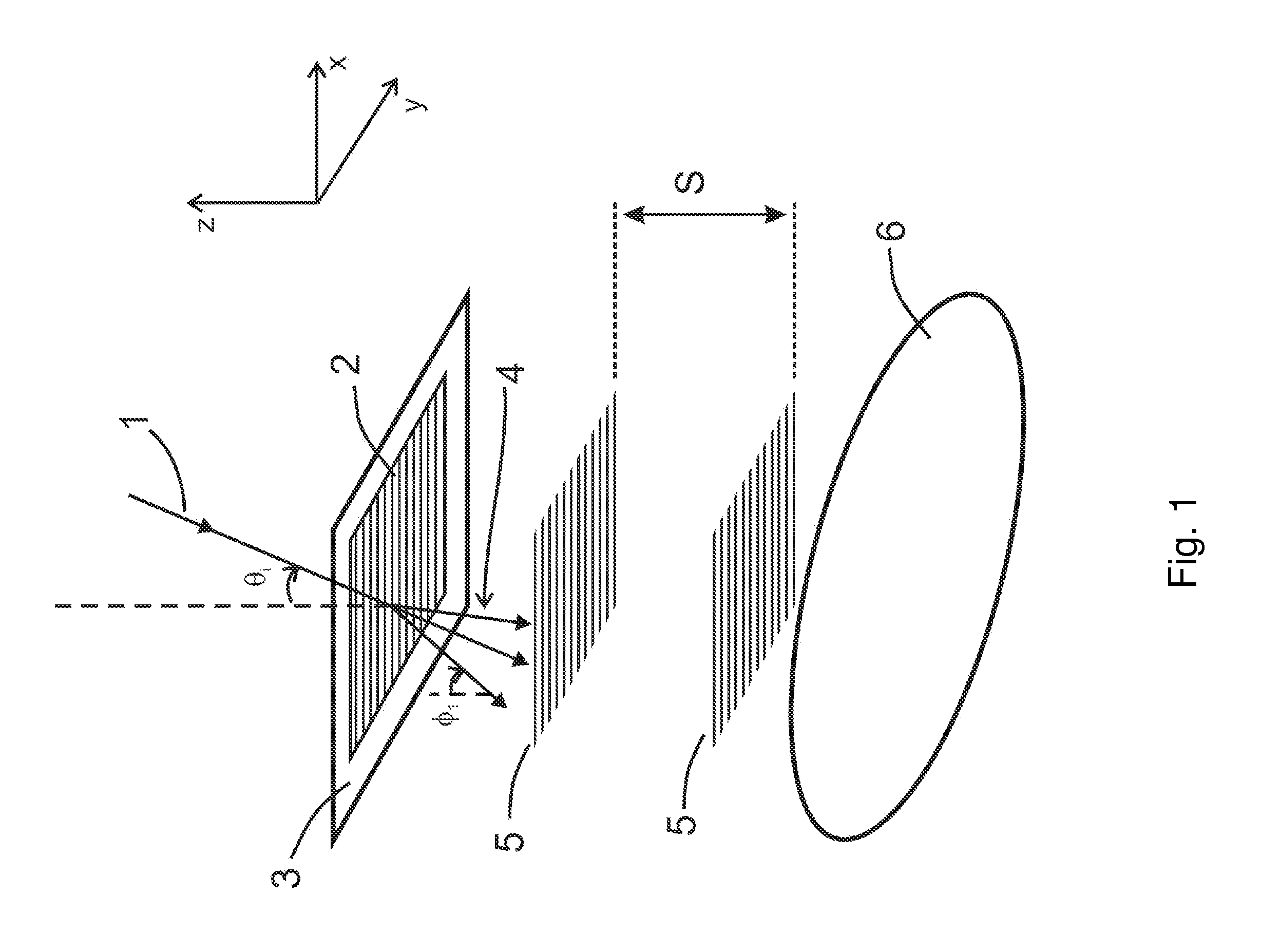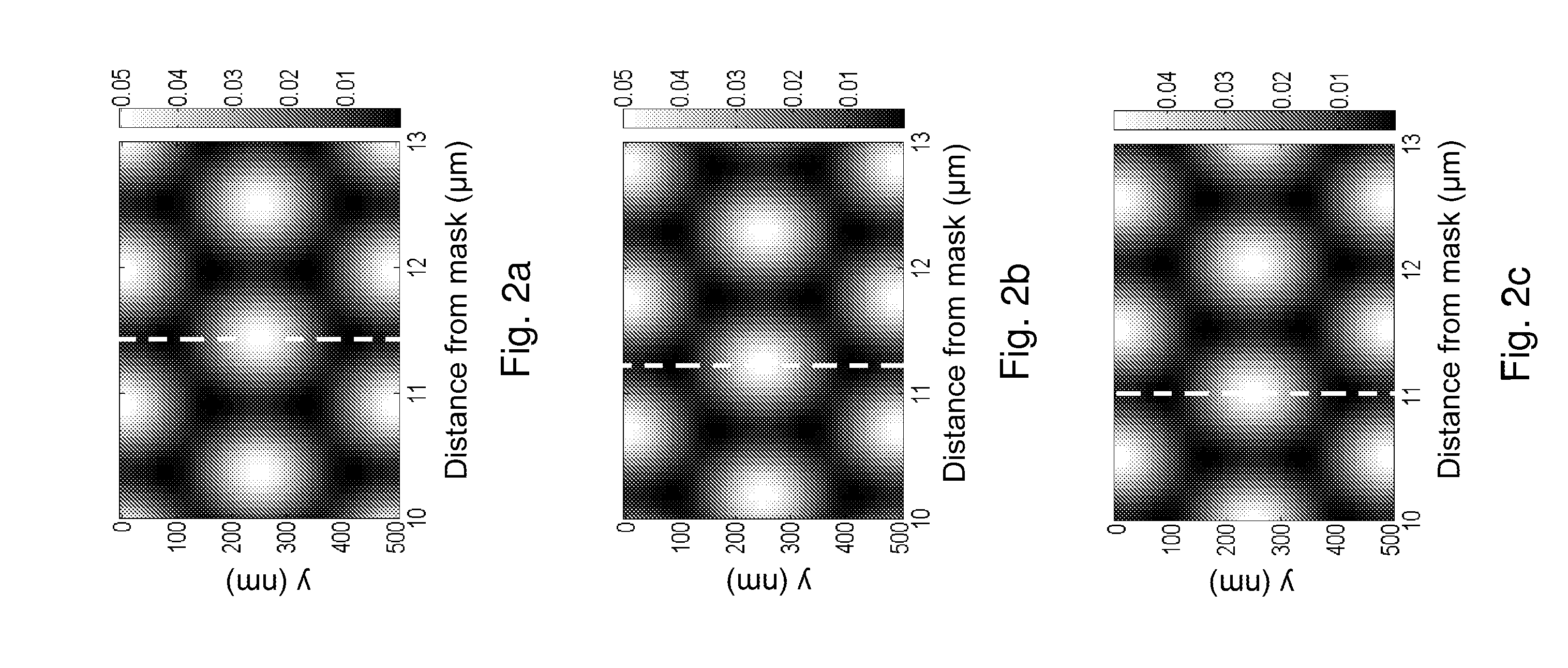Method and apparatus for printing a periodic pattern with a large depth of focus
a technology of depth of focus and periodic pattern, applied in the field of photolithography, can solve the problems of narrow depth of field, increasing difficulty, and sensitive distance in the intensity distribution of self-images and sub-images
- Summary
- Abstract
- Description
- Claims
- Application Information
AI Technical Summary
Benefits of technology
Problems solved by technology
Method used
Image
Examples
first embodiment
[0089]In the above-described first embodiment of the invention, the light in the beam 29 illuminates the grating 36 with a range of angles of incidence in a sequential manner wherein the light in the beam 29 has a substantially uniform angle of incidence and the angle of the beam 29 is changed during the exposure. It should be understood that the manner for illuminating the grating 36 with light over a range of angles of incidence that is exemplified by this embodiment may be equivalently achieved using many alternative combinations and configurations of light source, optical and mechanical components, so is in no way restricted to the particular selection of source, beam-collimating optics and beam-deflecting elements selected here. In one possible variant, the angular scan of the beam with respect to the mask is instead performed by tilting the mask and wafer sub-system, as a unit, with respect to a stationary beam.
[0090]With reference now to FIG. 12 which schematically shows a se...
second embodiment
[0093]In the above-described second embodiment of the invention, the light in the beam 60 illuminates each point of the grating 64 with a range of angles of incidence in a sequential manner wherein the grating 64 is illuminated by light whose angle of incidence varies across the beam 60 and the beam 60 is translationally scanned with respect to the grating 64. It should be understood that the manner for illuminating the grating 64 with light over a range of angles of incidence that is exemplified in this embodiment may be equivalently achieved using many alternative combinations and configurations of light source, optical and mechanical components, so is in no way restricted to the particular selection of source, beam-forming optics and scanning components selected here. For example, the scanning may alternatively be performed by displacing the mask and wafer sub-system, as a unit, with respect to the beam.
[0094]In another variant of this embodiment, a different set of beam-forming ...
third embodiment
[0098]In the above-described third embodiment of the invention, the light in the beam 88 illuminates the grating 92 with a range of angles of incidence in a simultaneous manner wherein the grating 92 is illuminated by light having a range of angles of incidence at each point of the beam 88. It should be understood that the manner for illuminating the grating 92 with light over a range of angles of incidence that is exemplified by this embodiment may be equivalently achieved using many alternative combinations and configurations of light source, optical and mechanical components, so is in no way restricted to the particular selection of source and components selected here.
[0099]In another embodiment of the invention that is not illustrated here, but may regarded as a combination of the second and third embodiments, a set of beam forming optics similar to those of the third embodiment are employed to generate a beam whose light at each point of the beam has a range of angles in the xz...
PUM
| Property | Measurement | Unit |
|---|---|---|
| mean angle | aaaaa | aaaaa |
| photosensitive | aaaaa | aaaaa |
| wavelength | aaaaa | aaaaa |
Abstract
Description
Claims
Application Information
 Login to View More
Login to View More - R&D
- Intellectual Property
- Life Sciences
- Materials
- Tech Scout
- Unparalleled Data Quality
- Higher Quality Content
- 60% Fewer Hallucinations
Browse by: Latest US Patents, China's latest patents, Technical Efficacy Thesaurus, Application Domain, Technology Topic, Popular Technical Reports.
© 2025 PatSnap. All rights reserved.Legal|Privacy policy|Modern Slavery Act Transparency Statement|Sitemap|About US| Contact US: help@patsnap.com



